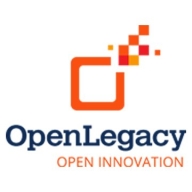

OpenLegacy and IBM Cloud Pak for Integration compete in the enterprise integration category, each providing unique benefits tailored to different organizational requirements. OpenLegacy has the upper hand in cost efficiency and minimal disruption during deployment, while IBM Cloud Pak for Integration leads with its comprehensive feature set catering to complex integration needs.
Features: OpenLegacy supports rapid legacy system integration through low-code development and streamlined API creation, optimizing for speed and efficiency. Additionally, it offers straightforward legacy system connectivity and minimizes disruptions. IBM Cloud Pak for Integration boasts a suite that includes API management, data and application integration, messaging services, and event streams, suitable for enterprises needing an all-encompassing integration solution.
Room for Improvement: OpenLegacy could enhance its functionality by expanding integration capabilities to cater to more complex scenarios, diversifying its feature set, and improving scalability options. IBM Cloud Pak for Integration might focus on simplifying its deployment process, reducing its cost barrier, and enhancing the user interface for a more seamless experience.
Ease of Deployment and Customer Service: OpenLegacy offers a straightforward deployment model with minimal learning curves, complemented by excellent customer service. IBM Cloud Pak for Integration, while requiring a more complex setup due to its broad features, provides extensive support resources to aid deployment. OpenLegacy is known for its simplicity and quick implementation, whereas IBM requires a dedicated team due to its intricate nature.
Pricing and ROI: OpenLegacy provides an affordable entry point with a fast return on investment, driven by low initial costs and efficient integration processes. IBM Cloud Pak for Integration necessitates a higher upfront investment, justified by its extensive and scalable capabilities designed for larger enterprises with comprehensive integration needs.

IBM Cloud Pak for Integration gives you complete, flexible integration using capabilities you need to move at today's speed of business, including the tools to help you achieve your application modernization goals as part of your journey to the cloud.
OpenLegacy helps organizations quickly launch innovative digital services by extending their core back-end systems to the web, mobile and cloud in days or weeks versus months. Our microservice-enabled API integration and management software quickly reduces project backlog by automating and accelerating microservices and API creation, deployment, testing and management from core applications, mainframes and databases. Together, business and IT teams can quickly, easily and securely meet consumer, partner or employee demands for digital services without modernizing or replacing core systems, and without special programming skills or invasive changes to existing systems and architectures. OpenLegacy is designed for ongoing management of microservices APIs and is based on open standards, so our software plays nice with your current technology stack and supports agile, DevOps and continuous development. Learn why leading companies choose OpenLegacy at www.openlegacy.com.
We monitor all API Management reviews to prevent fraudulent reviews and keep review quality high. We do not post reviews by company employees or direct competitors. We validate each review for authenticity via cross-reference with LinkedIn, and personal follow-up with the reviewer when necessary.